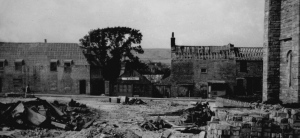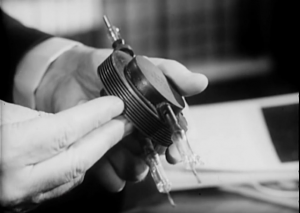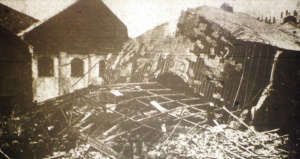Swanage Air Raids
Swanage was subjected to 929 air raid alerts by the 21 January 1944, due to the position of the German Radar Navigation Beam, huge amounts of bombers destined for Bristol, Bath and the northern cities.
Swanage Air Raids
Swanage was subjected to 929 air raid alerts by the 21 January 1944, due to the positioning of the radar beam, huge amounts of bombers destined for Bristol, Bath and the northern cities, for example Manchester Coventry and Liverpool, passed over the town, some of these raids consisted of over a 1000 bombers. Local people laid in their beds and listened to the loud drown of the aircraft passing overhead, to the bombing destination and later their return journey to France. In Swanage, between 1942 and 1943 there were six air raids resulting in 20 deaths and many life threatening injuries, this was miniscule compared to Poole, with their undertaking of organising and constructing the invasion fleet.
In 1942, there were five air raids carried out by light bombers such as the Junkers Ju 87 Stuka and Messerschmitt Bf 109 fighter. The first one was on the 20 April, where houses in Cornwall Road were damaged killing five people and injuring 21 people. The next event was on 13 July, where houses in Park Road were damaged resulting in three causalities. The next event was on 14 May, where a bomb landed north of the town hall seriously damaging John Wesley’s cottage. The next event was on the 17 August, a direct hit on the Westminster Bank in Institute Road, the manager and his wife were killed, the second bomb landed on Chapel Lane and destroyed a large section of the Narrows killing 8 and injuring 39, this section of bomb damaged land is now the lawn outside of the Day Care building. The next event was on the 23 August, where a building, next to the White Swan, known as Swanage Dairies, was destroyed and five people were killed with nine casualties. In 1943, on the 3 February a bomb fell on the old churchyard that seriously damaged cottages in Church Hill and the roof of the parish church 4
The next event was on the 17th August, a direct hit on the Westminster Bank in Institute Road, the manager and his wife were killed, the second bomb landed on Chapel Lane and destroyed a large section of the Narrows killing 8 and injuring 39, this section of bomb damaged land is now the lawn outside of the Day Care building.
The next event was on the 23 August, where a building, next to the White Swan, known as Swanage Dairies, was destroyed and five people were killed with nine casualties. In 1943, on the 3 February a bomb fell on the old churchyard that seriously damaged cottages on Church Hill and the roof of the parish church 4
Langton Matravers Air Raids
In 1942 Langton Matravers was awakened by bombs landing in the vicinity from a bombing raid on Leeson House, to this day the large field south of the school still bears the scars. Luckily they missed their target and the resident staff were not killed. On the 25th May the entire organisation was moved inconspicuously using lorries to Malvern in the Worchester Hills, far from the coast.
In 1940, this establishment was transferred from Dundee Scotland to Worth Matravers. Initially, there were approximately 200 members of staff, housed
in wooden huts at Worth Matravers, their task was to develop a means of detecting incoming German bombers, in that they were successful. Due to their success, TRE recruited more staff that included the top scientists in the country, to develop the Centimetric or high frequency radar solution, the Magnetron.
Poole Air Raids
Poole was also attacked by light bombers such as the Junkers Ju 87 Stuka and Messerschmitt Bf 109 fighter, known as a Sneak Raider. One instance of this occurred on the 21st of March 1941 when the train carrying the predominantly female workers from the Royal Navy’s Holton Heath Cordite Factory back home in the evening was attacked by a “Sneak Raider”. The aircraft dropped six bombs that straddled the train, blowing out all the windows, but not derailing the train that continued its journey, stopping at Hamworthy station for medical assistance. The carriages were pock-marked with bomb shrapnel and the women were shell shocked, but luckily they were only badly bruised, all escaped death.
On the 27th of March a “Sneak Raider” was more successful in his mission of carnage, killing 34 men and injuring 16 others . During an air-raid, the attacker was spotted by a Bourne Valley Gasworks Roof Watcher, a single aircraft, descending out of the clouds, he raised the alarm but it was too late. The aircraft released two bombs, they missed the viaduct and headed straight for the Gas works. The first hit a stores building and the second hit the main building containing the recreation and mess room that was full at lunch time.
The bomb smashed through the roof of the recreation room, then a 45cm concrete ceiling above the mess room, where it was caught by its fins and dangled from the ceiling. The bomb had a delayed action fuse that enabled the mess room occupants to attempt an escape or hide under desks, but alas the time was too short to allow all to escape and 34 men were killed and 16 injured3.


